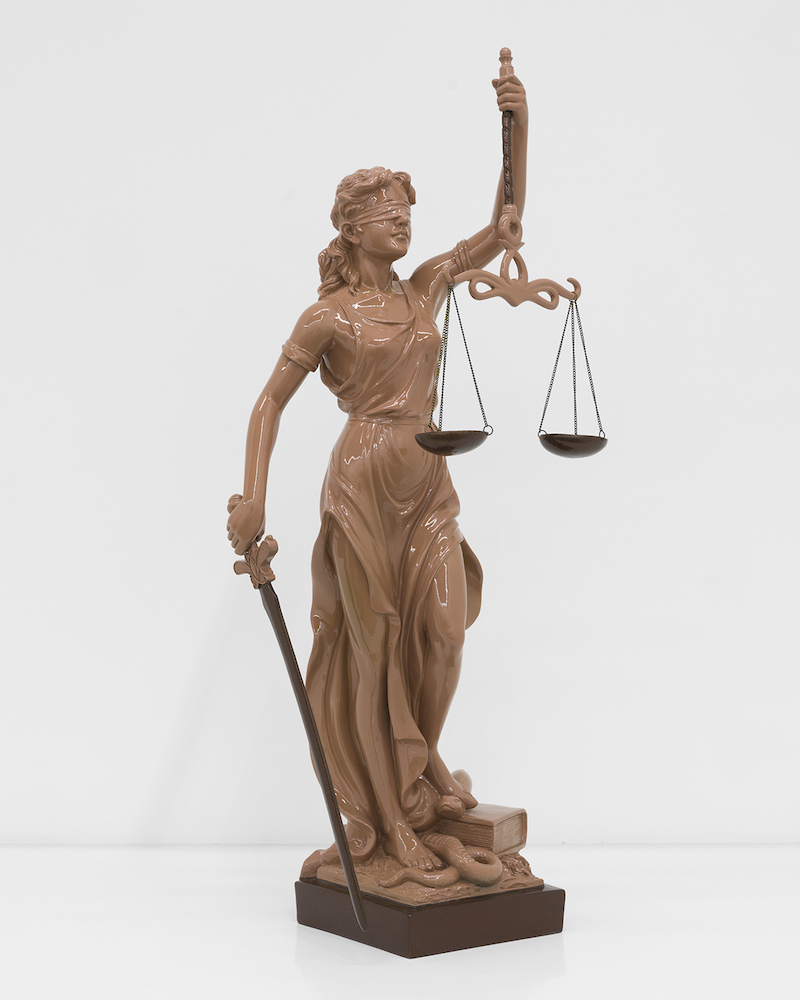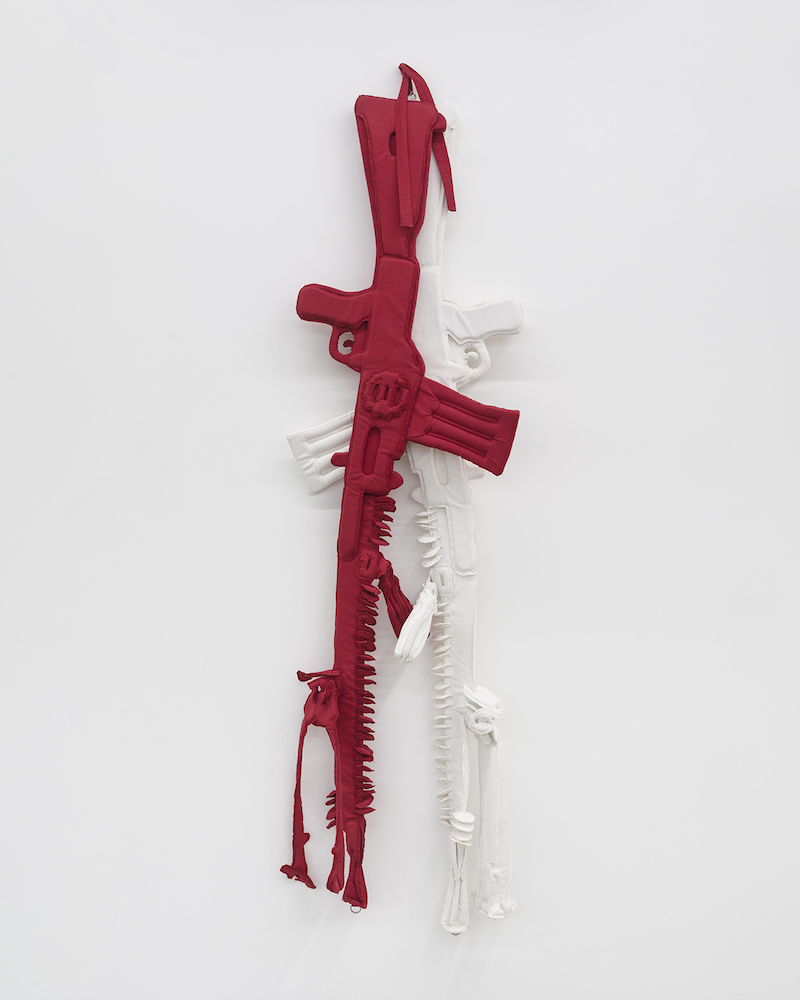Linda Vallejo’s career-spanning exhibition at parrasch heijen is a homecoming of sorts. The gallery is ensconced in the center of Los Angeles’ Boyle Heights district, where she was born, and a stone’s throw from the iconic Sears Building — an area where Vallejo spent much of her career’s formative years — as well as the legendary Self-Help Graphics (SHG), a critical art-production and community center that has focused on social justice since its founding in the early 1970s.
Vallejo possesses a storied history in Los Angeles and is a self-described postmodern woman working in a multitude of media including painting, prints, drawings, sculpture and installation. Her artistic experimentation has afforded her a singular and idiosyncratic voice. What’s not immediately obvious is the relentless drive required to define and place herself in relationship to a ruthlessly dogmatic art world. As she noted in a 2007 interview with UCLA’s Chicano Oral Histories project: “the first bandwagon I ever joined was the Chicano movement, and that in itself has been a struggle from the very beginning…I just realized that in order to be able to get ahead, you had to have credentials…you had to have a portfolio worth its muster, you had to prove your talent…”

Make ‘Em All Mexican: Justice, 2017.
She accomplished that over a 55-year span, and nothing seemed off-limits. In the late 1980s, she found time to open a gallery featuring Latino artists in downtown Los Angeles, long before it was fashionable to open commercial art galleries in what is now known as LA’s Arts District.
Organized around four key bodies of work, the retrospective is a smartly curated survey of the breadth of Vallejo’s practice. Hung in a sparing, aesthetically rigorous fashion, rather than strictly chronologically, viewers are encouraged to grapple with Vallejo’s provocative narratives, which tackle themes of indigeneity, feminism and ethnic-cultural critique.
The early and surprising Anahuac, (1978), which refers to a historical, cultural region of Mexico, is composed of folded monotype sculptures and mixed media sheathed in a plastic bubble, reading as a hermetic diorama of pyramidal forms. The work feels tuned into a moment when art and technology aligned, and pop sensibilities and Conceptualism were in the ascendancy.
Vallejo’s ethereal oil painting, Eternal Seed (2000), reveals Vallejo’s embrace of indigenous tradition via a lyrical symbol of mother earth. Solitary Cloud I (2007) part of the Los Celios series, is a meditative reflection of Native landscapes. With the Data Sagrados series, she pivoted into creating socio-political data landscapes and portraits. In one work, National Latino Physicians and Surgeons: 6.3%, (2016) Vallejo utilizes a stippling effect with colored pencil and archival marker. The work illustrates a rather thorny truth: the dearth of a robust Latino medical workforce.

The Impotence of Violence, 2024.
Taking center stage in the main gallery is Make ‘Em All Mexican: Justice (2017), composed of repurposed resin, acrylic and metal flake. The allegorical replica of Lady Justice serves as an ostensible moral beacon of the judicial system — but for whom? Vallejo transmuted the work by sheathing it in chocolate-hued paint, which raises the question: What if all cultural and social icons were just a little bit browner?
But by far the most powerful expression of Vallejo’s conceptual acumen is the hanging sculpture The Impotence of Violence (2024). The red-and-white mixed-media, sewn fabric of AK-47 long guns is an intellectual coup de grace, a distillation and convergence of multiple contentious points of view. Notions of masculinity, impotence, femininity and violence all intersect in this seminal work.
Maneuvering through the exhibition, one can’t help feeling a bit of aesthetic whiplash, but Vallejo presents a sweeping and frequently sublime vision. And it doesn’t end in the galleries: A garden gnome, transformed with her signature brown hue, perches in the gallery’s Zen-like garden, giving one pause and a bit of amiable respite.


